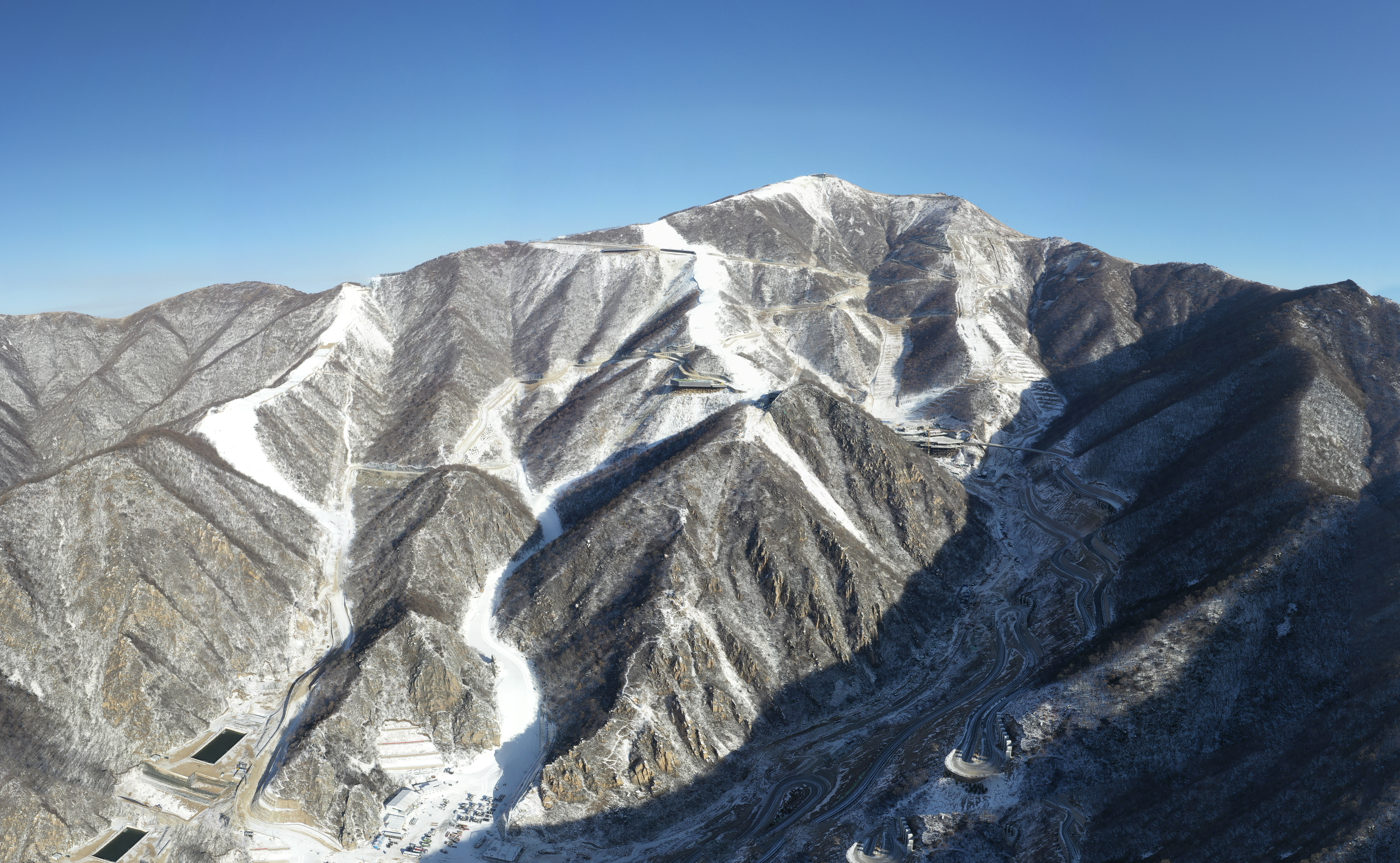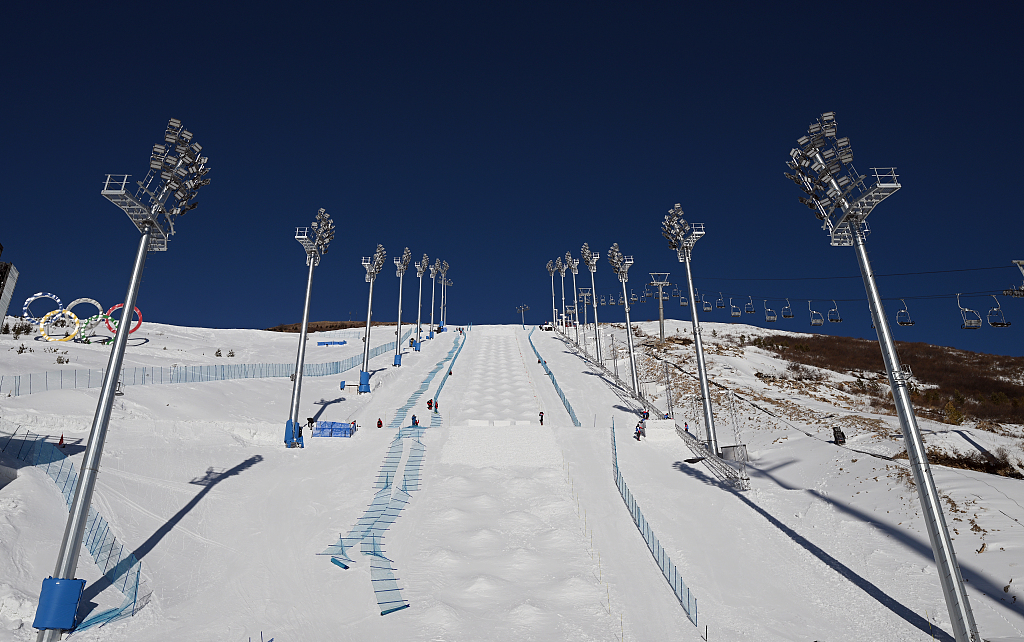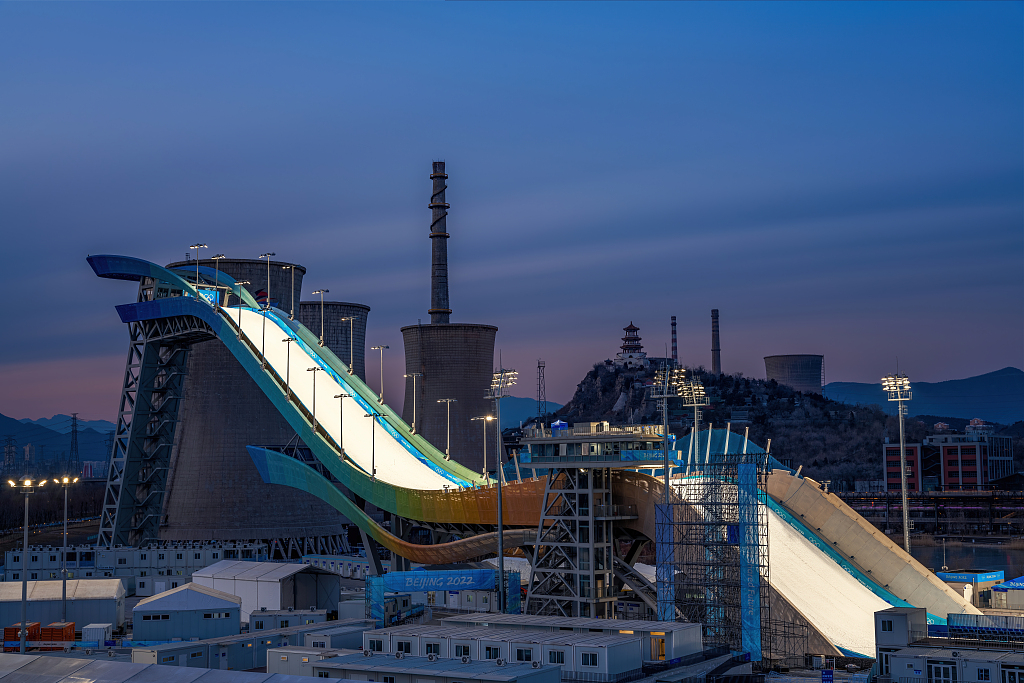The Winter Olympic Games will mostly be held in mountain resorts, with events such as skiing, snowmobiling and sledding relying on natural conditions to a great extent. The close distance between the competition zones and the natural ecosystem has raised concerns about the ecological impact, such as vegetation destruction and serious ecological degradation, caused by the construction of the Winter Olympic Games venues.
The Beijing Organizing Committee for the 2022 Winter Olympic Games has released its official "Beijing 2022 Olympic and Paralympic Winter Games Sustainability Plan," and has promised to hold a Winter Olympic Games with a positive environmental impact. How can the integration of ecological protection and project construction for the 2022 Winter Olympic Games be achieved?

Yanqing competition zone. /Beijing Organizing Committee (BOC)
Yanqing competition zone. /Beijing Organizing Committee (BOC)
The Beijing Winter Olympics involves three competition zones: Beijing, Yanqing and Zhangjiakou.
Yanqing Competition Zone
"After six years of construction, the Yanqing competition zone has turned the core design concept of 'Mountain pavilions and ecological Winter Olympics' from blueprint into reality,' said Yu Bo, head of Yanqing District in Beijing, at a press conference on January 13.
The Yanqing competition zone was the most difficult construction of the three zones due to its special and sensitive ecological environment. The highest altitude of the core area is 2,198 meters, and the lowest altitude is more than 300 meters. At the beginning of construction, it was a mountainous area with no roads, no water, no electricity and no communication infrastructure.
To protect the ecological environment, 18 experts and professors engaged in the ecological restoration work. They were divided into three expert groups: vegetation and landscape restoration, land disaster and soil and water conservation, hydrology and water environment.
So far, the ecology of 2.16 million square meters in the Yanqing competition zone has been effectively restored.
In terms of plant protection, the builders of the zone tried their best to retain native trees on site. For example, the ropeway is designed to avoid natural secondary forests. For the plants that couldn't be avoided, measures were taken to protect them nearby or ex situ.
A total of five on-site protection areas were built in the competition zone, with 313 trees under in-situ protection. Two near-field protection areas were built, and 11,000 shrubs and grasses were transplanted.
The Winter Olympics Forest Park, which covers an area of 0.32 square kilometers, has been created. A relocation protection base of nearly 0.2 square kilometers has also been built, and 24,000 trees have been transplanted, with the survival rate reaching 90.7 percent. At the same time, 81,000 cubic meters of topsoil was removed, and the original soil was covered and restored after completion to preserve the seed bank to the greatest extent possible and reduce the risk of biological invasion.
In terms of animal protection, in the construction process, wildlife channels were established or reserved, nighttime construction was reduced, artificial nests were installed, animal habitats were restored and rebuilt, and injured wild animals were quickly found and treated.

Genting Snow Park, in Chongli District, Zhangjiakou City. /VCG
Genting Snow Park, in Chongli District, Zhangjiakou City. /VCG
Zhangjiakou Competition Zone
The Beijing Organizing Committee released the Beijing 2022 Legacy Report (2022 edition) on January 19, saying that the forest coverage rate of Zhangjiakou City and Chongli District had reached 50 percent and 67 percent, respectively, by June 2021.
"In 2021, a total of 1192.7 kilometers of afforestation was implemented in the city. The survival rate of afforestation in the core area of the Winter Olympics reaches more than 99 percent, and the forest coverage rate reaches more than 80 percent," said Yang Jianzhong, Chongli Forestry and Grassland Bureau's chief engineer.
A report by Zhang Yuan published in the International Journal of Environmental Research and Public Health shows that the vegetation coverage around the Zhangjiakou competition zone was enhanced from 2000 to 2020, even in the core area of the venue construction zone. It also indicates that the impact of the construction on the vegetation coverage is limited and compensable.

Shougang Big Air venue in Beijing. /VCG
Shougang Big Air venue in Beijing. /VCG
Beijing Competition Zone
In urban landscape environmental protection, about 2.5 square kilometers of green construction was carried out in venues and related roads. The transformation and upgrading of green spaces in parks around the Big Air Shougang venue was completed, implementing green construction on 2.3 square kilometers. Around the venue, 1.77 square kilometers of green land has been added or renovated, Gao Dawei, deputy director of Beijing Municipal Forestry and Parks Bureau, said at a press conference on November 30, 2021.
(Cover image designed by CGTN's Feng Yuan)
(If you want to contribute and have specific expertise, please contact us at nature@cgtn.com.)

